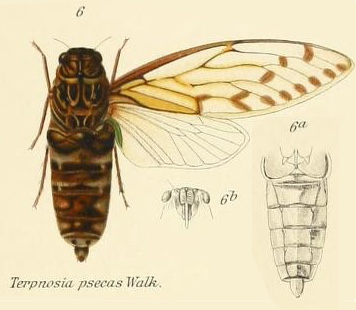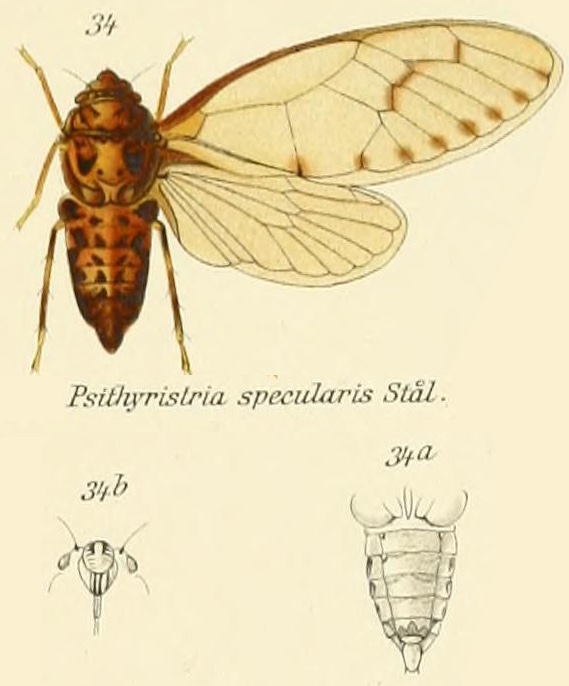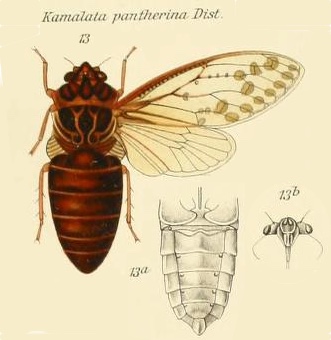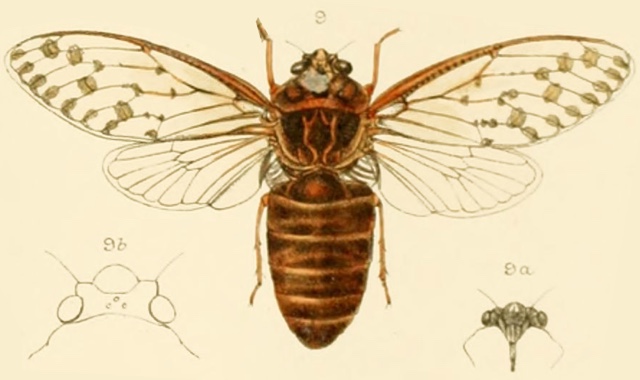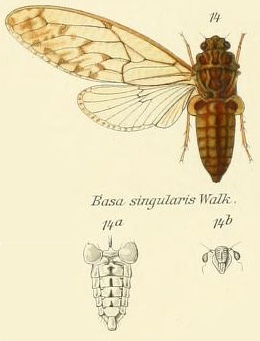Terpnosia stipata (Walker, 1950) is a cicada found in Sri Lanka.
Scientific classification:
Family: Cicadidae
Subfamily: Cicadinae
Tribe: Psithyristriini
SubTribe: Psithyristriina
Genus: Terpnosia
Species: Terpnosia stipata (Walker, 1950)
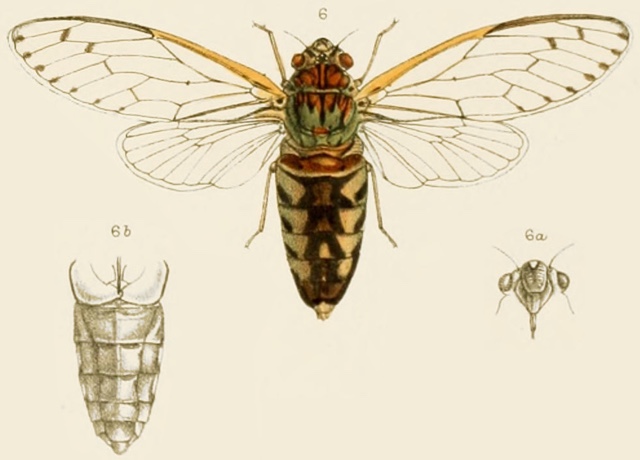
Species specimen description from A Monograph of Oriental Cicadas by W.L. Distant:
[Male] Body above greenish-ochraceous; head with the margins of front and apical angles of vertex fuscous; the area of the ocelli, an oblique fascia on each side, and a small spot at inner margins of eyes, black. Pronotum with two central fasciae united posteriorly, the fissures, a spot on lateral margins, extreme edge of posterior margin and a spot on each side of same, black. (The discal coloration of the pronotum in the specimen described is l)ro\vnish-ochraceous.) Mesonotum with a central linear fascia with a shorter one on each side, followed by a small obconical spot and a sinuated sublateral fascia, black; two small spots in front of the cruciform elevation and the angles of same black. Abdomen with the posterior segmental margins, a broad central dorsal fascia, and a macular lateral fascia, very dark fuscous; extreme apex greyish -white. Bodj’ beneath and legs pale greenish; the abdomen beneath talc-like and semi-transparent; a few sternal spots, the anterior femoral spines, and the tarsi, more or less fuscous.
Tegmina and wings pale hyaline, the venation fuscous or ochraceous; tegmina with the costal membrane ochraceous; the transverse veins at the bases of the second, third and fifth apical areas infuscated, and a marginal series of small fuscous spots situate on the longitudinal veins to apical areas.
Face globose, centrally sulcated except at base, where there is a slight callosity; lateral striations profound; rostrum slightly passing the posterior coxae.
Long. excl. tegm. [male], 3:3 millim.; [female], 22 millim. Exp. tegm. [male] , 80 millim.; [female] , 70 millim.
References:
- The illustration, description and location information comes from A Monograph of Oriental Cicadas by W. L. Distant. 1889-1892. Read it on the Biodiversity Heritage Library website.
- Species name information comes from Allen Sanborn’s Catalogue of the Cicadoidea (Hemiptera: Auchenorrhyncha).
- Tribe information comes from: MARSHALL, DAVID C. et al.A molecular phylogeny of the cicadas (Hemiptera: Cicadidae) with a review of tribe and subfamily classification.Zootaxa, [S.l.], v. 4424, n. 1, p. 1—64, may 2018. ISSN 1175-5334. Available at: https://www.biotaxa.org/Zootaxa/article/view/zootaxa.4424.1.1

